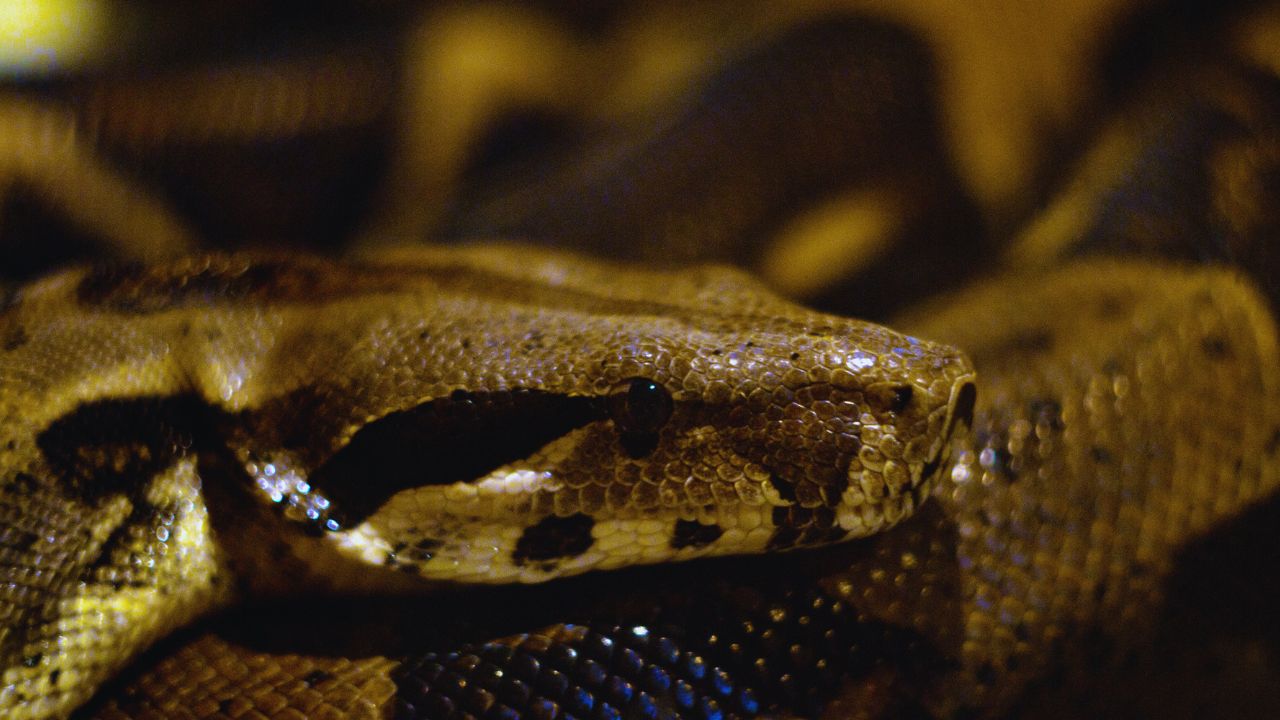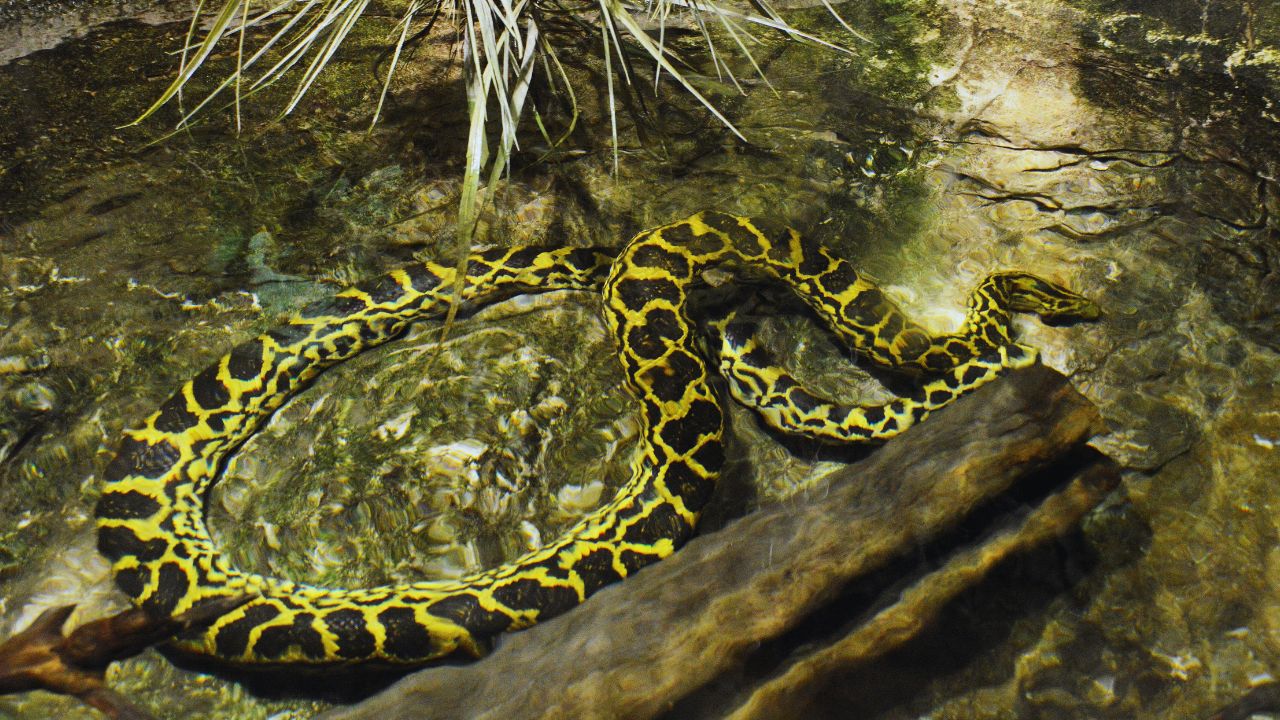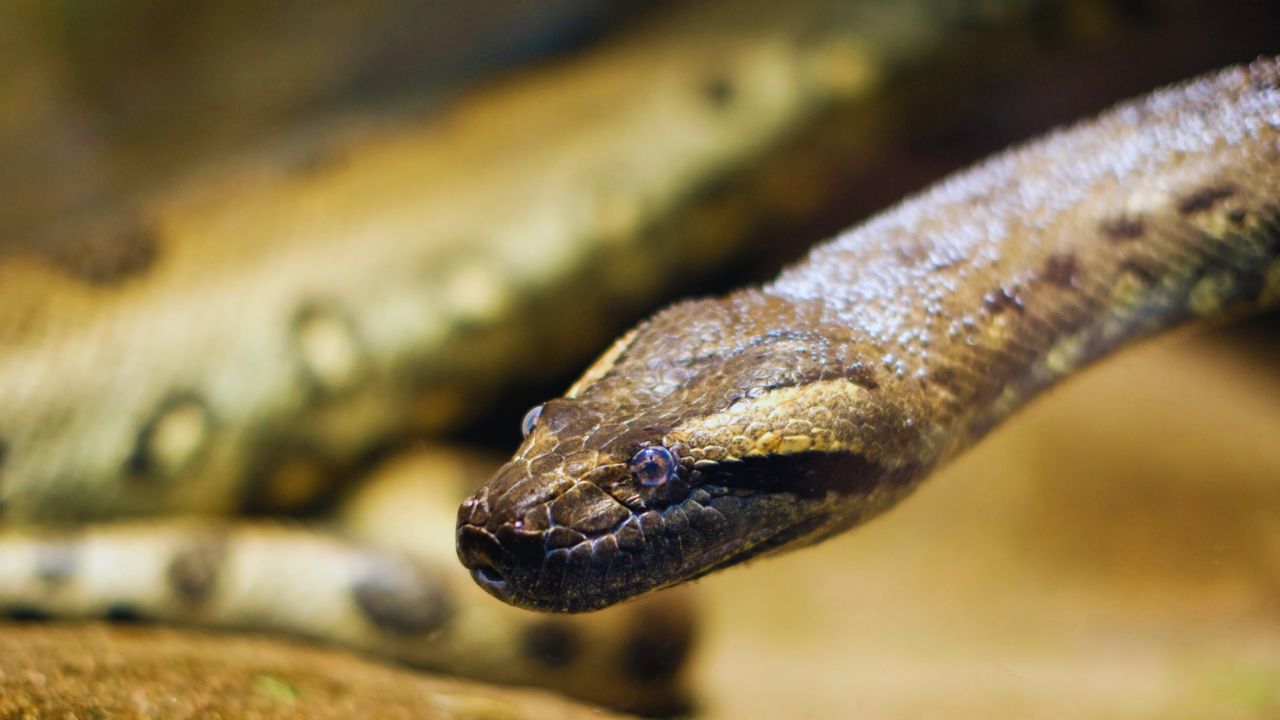Comparing Rattlesnakes with Anacondas
The biggest venomous snakes in the United States are rattlesnakes, but the heaviest snakes in the world, anacondas, are non-venomous constrictors that subdue their victims by encircling them with their gigantic bodies. Because of their lethal skills and intimidating appearance, both of these snakes have instilled fear and amazement in people throughout human history. Even though they are both highly developed predators, rattlesnakes and anacondas vary greatly in a variety of ways. This article explores the distinctions between anacondas and rattlesnakes, offering a thorough analysis based on a number of factors, such as size, habitat, scientific classification, and threat to people.

Scientific Classification and Evolutionary Traits
| Trait | Rattlesnake | Anaconda |
|---|---|---|
| Family | Viperidae | Boidae |
| Subfamily/Genus | Crotalinae (Pit Vipers), Crotalus, Sistrurus | Eunectes |
| Venom | Venomous (with long, hinged fangs) | Non-venomous (constrictor) |
| Special Features | Heat-sensing pit organs, rattling tail | Aquatic nature, strong swimmer |
| Naming Origins | Crotalus (Greek for “castanet”), Sistrurus (“tail rattler”) | Eunectes (Greek for “good swimmer”) |
Scientific Classification and Evolutionary Features
The physiology and behavior of anacondas and rattlesnakes are diverse due to their unique evolutionary features and membership in separate families. The family Viperidae, which includes rattlesnakes, is a group of poisonous snakes distinguished by its long, hinged fangs and capacity to inject venom. Rattlesnakes are members of the Crotalinae subfamily of this family, which is also known as pit vipers. The ability of this subfamily of snakes to sense heat is attributed to heat-sensing pit organs situated amongst the nose and eyes. These organs enable the snakes to identify the infrared radiation released by warm-blooded prey. Most species of rattlesnakes are found in the genus Crotalus, which is named after the Greek word for “castanet.” A few species are found in the genus Sistrurus, which is named for the animal’s tail. This naming technique draws attention to the unusual adaptation that these snakes have developed to warn off possible threats—the characteristic rattling sound they make when they shake the hollow keratin segments at the end of their tails.
Conversely, anacondas are a family of non-venomous constrictors often referred to as boas, under the Boidae subfamily. The epithet “good swimmer,” Eunectes, comes from the ancient Greek language and refers to the genus of anacondas within this family, which reflects their aquatic nature. The Bolivian anaconda (Eunectes beniensis), the yellow anaconda (Eunectes notaeus), the green anaconda (Eunectes murinus), and the dark-spotted anaconda (Eunectes deschauenseei) are the four known species of anacondas. The biggest and most well-known of them is the green anaconda, which is often just called an anaconda. Although the name of the species suggests a predilection for smaller prey, like mice, anacondas are able to take down far bigger creatures, demonstrating their amazing power and hunting skills.

Geographic Distribution and Habitat
The geographical areas where snakes and anacondas live in have formed the radically diverse ecosystems that they occupy. Native to the Americas, rattlesnakes may be found all the way from southern Canada to Argentina. The southwestern United States, especially Arizona, has the largest number of rattlesnake species—13 distinct species are known to reside there. Due to their extreme adaptability, these snakes can live in a wide range of habitats, such as rocky hills, meadows, swamplands, and deserts. It is also known that rattlesnakes may live up to 11,000 feet above sea level, often hiding in rocky cracks. They go into a state of hibernation called brumation during the chilly winter months, when they congregate in group dens to save energy.
On the other hand, anacondas are native to South America and mostly inhabit the Amazon and Orinoco River Basins. Additionally, Bolivia, Brazil, Ecuador, Paraguay, Colombia, Venezuela, Trinidad, and the Guianas are home to them. The hot, humid climate of thick rainforests is ideal for anacondas, who are often found in swamps, sluggish rivers, and flooded grasslands. Anacondas, in contrast to rattlesnakes, are renowned for their ease of long-distance swimming. In order to preserve their body temperature and moisture during the dry season, they often bury themselves in mud, a behavior they find appealing.
| Aspect | Rattlesnake | Anaconda |
|---|---|---|
| Geographic Range | Americas (Southern Canada to Argentina) | South America (Amazon and Orinoco River Basins) |
| Habitat | Deserts, rocky hills, swamplands, meadows, and grasslands | Dense rainforests, swamps, rivers, and flooded grasslands |
| Altitude Range | Up to 11,000 feet above sea level | Lowland tropical forests and aquatic environments |
| Behavioral Adaptations | Brumation during cold winters | Highly aquatic, bury in mud during the dry season |
Dimensions and Physical Features
One of the most obvious differences between anacondas and rattlesnakes is their larger size. Generally speaking, rattlesnakes are between 1.5 and 6.5 feet long, while some bigger species—like the eastern diamondback rattlesnake—can reach lengths of up to 8 feet. Male rattlesnakes tend to weigh somewhat more than females, with an average weight of 1 to 10 pounds. The strongly ridged or “keeled” scales covering their thick, muscular bodies give rattlesnakes a rough feel. Depending on the species, their coloring varies, but they often have black diamond patterns or other geometric designs on a lighter backdrop. The most characteristic trait that sets rattlesnakes apart is their hollow keratin segments in the tail, which make a characteristic rattling sound when shaken. This is a vital feature of the species; it warns off would-be predators with this sound.

Anacondas have an average length of 9 to 16 feet; on the other hand, some individuals may reach up to 20 feet, Anacondas are much bigger than rattlesnakes. They weigh an average of 65 to 155 pounds, with some unusually huge females reaching over 200 pounds. They are also far heavier. Anacondas are sexually dimorphic, meaning that the females are much bigger than the males. Their bodies have smooth scales that become larger toward the tail and are thick and muscular. With their eyes and nostrils located atop their heads, anacondas’ heads are comparatively tiny in relation to their enormous bodies. Because of this adaptability, they can stay almost completely immersed and still breathe and see. They usually have olive green coloring, with darker dots distributed in complex patterns along the length of their bodies. This helps them blend in well with their surroundings. Apart from their enormous size, anacondas are unlike other snakes in that they possess two working lungs and residual hip and rear limb bones from their evolutionary forebears.
| Category | Rattlesnake | Anaconda |
|---|---|---|
| Average Size | 1.5 to 6.5 feet, up to 8 feet for some species | 9 to 16 feet, up to 20 feet |
| Average Weight | 1 to 10 pounds | 65 to 155 pounds, some over 200 pounds |
| Hunting Technique | Ambush predators use venom to immobilize prey | Constriction suffocates prey |
| Diet | Rodents, birds, rabbits, small reptiles, and amphibians | Fish, birds, mammals, and large animals like deer |
| Danger to Humans | Venomous bite, medical emergency, but warnings given | Rare attacks typically avoid humans |
Hunting Methods and Nutrition
Both anacondas and rattlesnakes are ambush predators that depend on patience and stealth to capture their prey. But they have quite different hunting strategies and dietary preferences. Rattlesnakes can identify prey even in total darkness because they can sense the body heat of warm-blooded creatures via their heat-sensing pit organs. As soon as they’ve found a good victim, they attack quickly, spitting poison out of their long, flexible fangs. Prey, which usually consists of rodents, birds, rabbits, and tiny reptiles or amphibians, is rendered immobile by the venom. The rattlesnake waits for its poison to take effect before devouring its victim whole after administering the lethal bite. Adult rattlesnakes don’t need to feed regularly; they may go for weeks at a time without eating.
Because they are bigger and more powerful than rattlesnakes, anacondas hunt in a different way. Since they can move quickly and stealthily in the water, they are mostly aquatic and often hunt there. Because anacondas are constrictors, they kill their prey by encircling it with their strong bodies and applying pressure until the victim suffocates. Compared to rattlesnakes, their food is more diverse and consists of fish, birds, mammals, and other reptiles. Robust prey, including deer, tapirs, caimans, capybaras, crocodiles, and jaguars, may be taken down by large anacondas. But big lunches like these are not very common. With a sluggish metabolism that enables them to digest and absorb nutrients over time, anacondas may survive for months without eating again after swallowing a huge prey item.
Risk to Humans
Another way that anacondas and rattlesnakes vary from one another is the potential threat that they offer to people. Since they are so omnivorous and often found in locations where people live and work, rattlesnakes have a higher chance of encountering humans. Because the powerful poisons in rattlesnake venom may result in severe tissue damage, paralysis, and even death if treatment is not received, rattlesnake bites represent a critical medical emergency. But before attacking, rattlesnakes usually provide a warning rattle, allowing humans to retreat and avoid being bitten. Rattlesnake bite deaths are comparatively uncommon since antivenom is readily available, although immediate medical intervention is essential.

Even though they are quite strong and large, anacondas pose significantly less of a danger to people. Human attacks are very uncommon, and when they do happen, they usually take place in isolated locations where the habitats of people and anacons meet. Researchers or field assistants working in locations where anacondas are widespread have been involved in the majority of known occurrences of anacondas attacking people. Rather than the snakes actively searching for people as prey, these events are often the outcome of excessive exposure to anacondas over lengthy periods of time. Anacondas are timid, solitary creatures that would rather stay away from people. As long as they are not intimidated or agitated, they do not represent much of a danger to humans.
A Comparative Study
Both anacondas and rattlesnakes are ferocious and interesting predators, with distinct habits and adaptations that have helped them flourish in their particular settings. Anacondas are non-poisonous constrictors that live in South America’s deep jungles and streams, while rattlesnakes are venomous pit vipers that travel widely across the Americas. The remarkable variety of the snake world and the many evolutionary pathways these reptiles have followed are highlighted by their disparities in size, hunting strategies, and threat to humans.
Not only does this help us appreciate these amazing animals more, but it also helps debunk a lot of myths and misunderstandings about them. These snakes never cease to enthrall and amaze us with their terrible beauty, whether it’s the rattling of a rattlesnake in the desert or the stealthy glide of an anaconda through the water.





